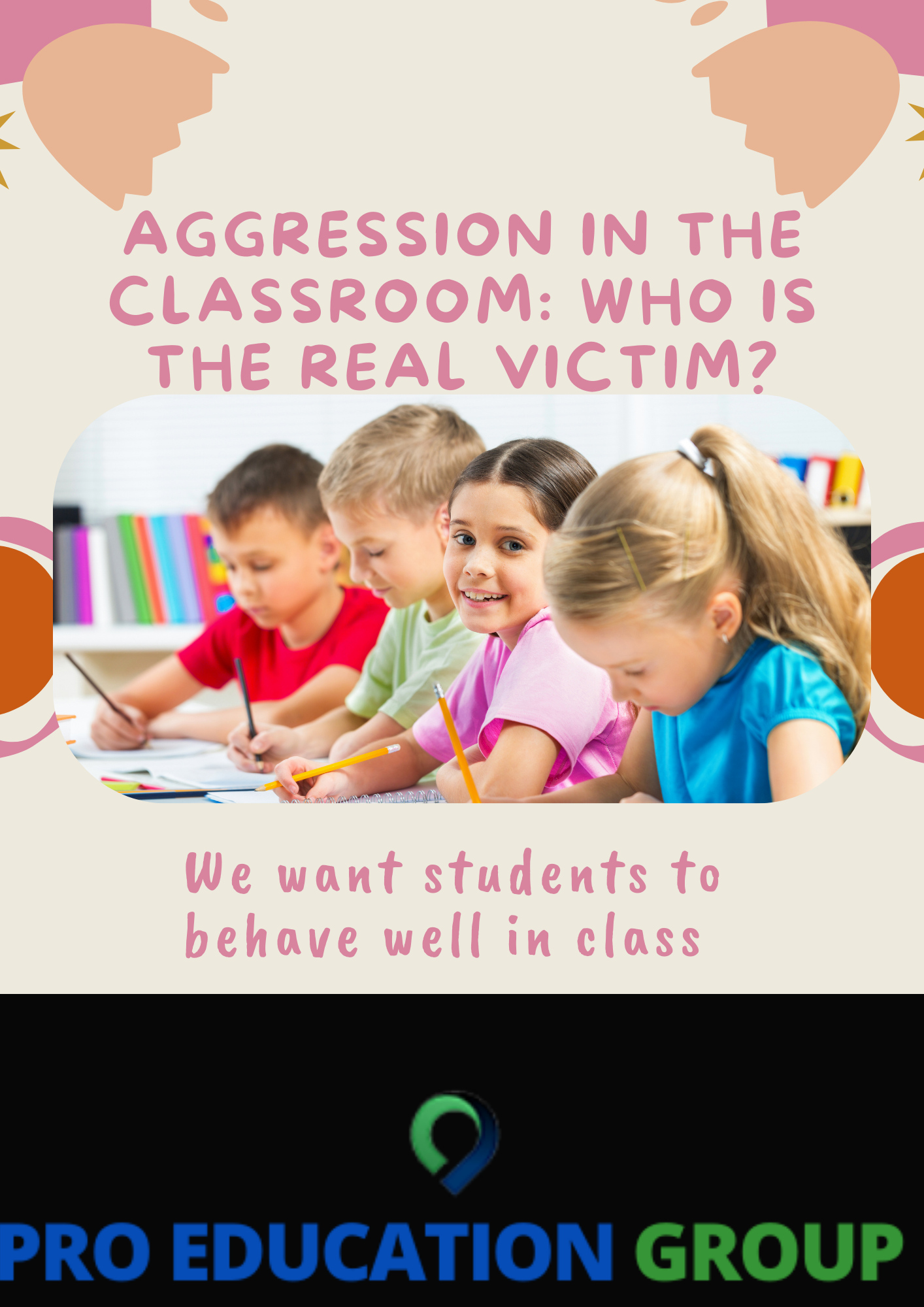
17.05.2022
Aggression in the Classroom: Who is the Real Victim?
There has been a number of staff being seriously hit in rendering services to students with special needs wherein physical aggression has been increasing. This has been a major factor in the burn-out that they have experienced, causing a 25 % turn-over rate among teachers nationwide (Trayser, 2020). Although the compassion for these students could not be questioned among the staff providing services to these types of students with disabilities, physical exhaustion leads them to shift to another career or to look for working in a safer environment. Not to mention are the notable capabilities of these teachers to manage /handle students with disabilities. The problem of the schools experiencing this dilemma is replacing them with the same quality and dedication aside from providing training to the new entrants (Trayser, 2020). Learning curve for the special education staff is two - three years.
Another concern with the increasing physical aggression among a number of the students with special needs is the effect on their peers who are not aggressive. They sometimes do not want to go back to school after being hit or they become aggressors, too. The former effect solicited a number of complaints from the parents, not necessarily directing them to the teachers concerned but to the administrators, worse they file suits. On the other hand, aggressions of these students with disruptive behaviors can after sometime be overcome through peer group influence, the latter demonstrating role models (Garcia-Carrion, Roldan, Campos, 2020). It involves implementing effective strategies for the teachers to establish the interactive learning environment (Garcia-Carrion, Roldan, Campos, 2020).
Aggression can result in the student being isolated from the rest of the peers, either because they do not want to get hurt or they do not want to get back at the combative student. Said isolation can be also due to the aggressive student damaging objects or furniture in the classroom. This can also occur with the family at home the said student lives with. Also, the particular student can also be badly hurt due to self-inflicting injury in case he/ she does not have someone to receive his/ her ire during the moment/s of aggression. Stop-gap solution is to give the student medicine to calm down, which could result in possible negative effects on his/ her physical condition. Said incidents can result in the significant impact it may have on the multiple areas of functioning and social development of the student with aggressive behaviors (Brosnan and Healy, 2011). Though the student has disabilities, the possibility of providing appropriate discipline can likewise be considered.
What could be the reason/s for the student with disabilities’ aggression? Identified reasons could be anger, frustration
(https://www.cdc.gov/ncbddd/disabilityandsafety/aggression.html, 2018), pain, inability to communicate or change in the surroundings/ situations/ weather, etc. Problem is, the reason for the violent behaviors can be varied in each particular situation and person. It will take a lot of understanding and knowing the person to immediately uncover the reason/s and to provide a solution to the occurring aggression. There is a need for recording empirical data to determine the root cause/s and the effective solutions that were tried and tested.
The debilitating after effects of aggression are multiple: the student exhibiting aggressive behaviors, teachers and staff, peers, families, administration and school environment. A three-pronged development approach should be utilized for this purpose, i.e., the administrators and staff, students and families. The state and school authorities should revisit its policies on restraint and seclusion. They should also try to develop a recovery program for the injured staff and not just leave everything to the insurer/ workmen’s compensation to handle the former’s case. The staff, on the other hand should maintain physical integrity of the data gathered corresponding to the aggressive situation/s. The teachers should also take note of the effective learning conditions and strategies that lessen, if not minimize the aggressiveness of the student. Family members should continually provide information on the student’s progress in minimizing aggression. Any change in behaviors should be reported to the teacher concerned. The student should know him/herself, understand the effects of the negative behavior and the importance of self-regulation. Everyone has to take part in the process, otherwise a portion of the special educational system will crumble.
Ana Maria R. Pabayos, Phd
May 2022
References:
Brosnan, J., Healy, O. 2011. A review of behavioral interventions for the treatment of aggression in individuals with developmental disabilities. Research in Developmental Disabilities. (Volume 32, 437-446). https://doi.org/10.1016/j.ridd.2010.12.023
García-Carrión,R. Roldán, S. and Campos, E. (2018). Interactive learning environments for the educational improvement of students with disabilities in special schools. Front. Psychol. https://doi.org/10.3389/fpsyg.2018.01744.
Trayser, L. (2020). Teach teachers In crisis: Why special educators are leaving and what you can. Retrieved May 4, 2022. https://learningtools.donjohnston.com/2020/01/teachers-in-crisis-why-special-educators-are-leaving-and-what-you-can-do-about-it-wtc